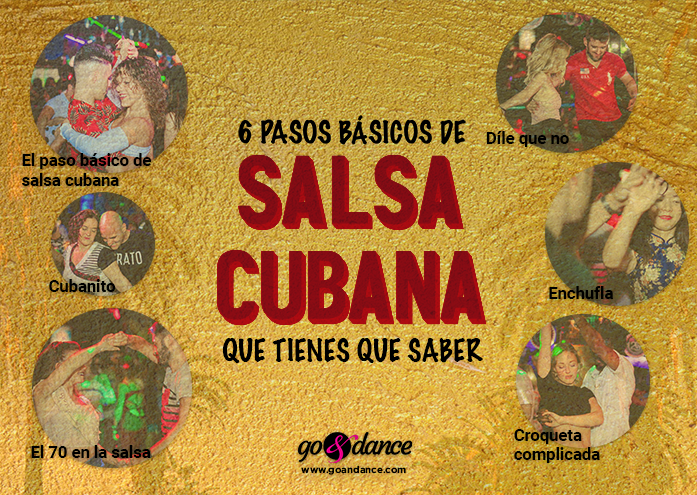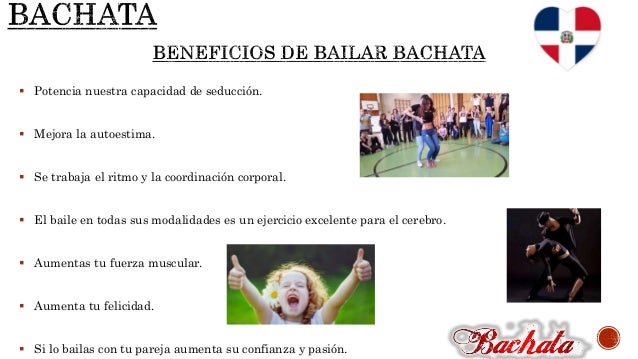Salsa Casino Para Bailar
- Lo mejor de la salsa, salsa del recuerdoclasicos de la salsa para bailarCopyright Disclaimer Under Section 107 of the Copyright Act 1976, allowance is made f.
- Pasos Salsa Casino. Pasos Salsa Casino; los pasos que en ella se utilizan son los mismos que en la salsa cubana, por lo que es imprescindible para poder bailar una rueda casino saber los pasos y figuras de la salsa cubana. Como en todos los bailes hay diferentes niveles, Nivel Inicial, Nivel Intermedio, y Nivel Avanzado.
- Cuban Salsa style 100%.real Baile de Casino(Cuban Salsa) met top Cuban look.Dance school Sabor de Cuba in Amsterdam & Haarlem.
- Vestuario para bailar salsa casino, vestuario para fiesta tipo casino. Public Group active 2 weeks, 6 days ago. CLICK HERE (Show full) CLICK HERE Vestuario para bailar salsa casino Vestuario para bailar salsa casino.
Salsa 2015 hit mix big salsa hits 2015 (full stream mix para bailar) urban latin tv.
Rueda de Casino (rueda) is a type of salsaround dance, born from the Cuban dance casino.
History[edit]
Casino was developed in Havana, Cuba in the early 1950s. Casino traces its origin as a partner dance from Cuban Urban Son and Cuban Cha Cha Cha, fused with partner figures and turns adopted from the Cuban Mambo, Rumba Guaguancó and North American Jive. Casino is different than other types of Salsa dance styles because of its spontaneous use of the rich Afro-Cuban dance vocabulary within a Casino dance; a Casino dancer frequently improvises references to other dances, integrating movements, gestures and extended passages from the folkloric and popular heritage. This is particularly true of African descended Cubans. Such improvisations might include extracts of rumba, dances for African deities (Orishas), the older popular dances such as Cha Cha Cha and Danzón as well as anything the dancer may feel.
Casino danced with multiple partners in a circular fashion emerged in 1956 under the name 'Rueda del Casino.' This dance was exclusively danced at the Club Casino Deportivo, but quickly spread to other clubs around the beachfronts and later to the capital. While the dance became popular so did the phrases 'vamos a hacer la rueda como en el Casino' (let's go dance 'rueda' like in the Casino) and 'vamos a hacer la rueda del Casino' (let's go dance 'rueda' of the Casino). Given the popularity of the music and dance, numerous Rueda de Casino dance groups appeared on the island made up of friends, family members, and professional dancers. At the end of the 1970s, Rueda de Casino groups became well-known through the popular TV show 'Para Bailar.'[1]
As a result of the Castro regime, many Cubans emigrated to the US, many to the Miami area. They took their culture with them, including various dishes, music and dancing. Rueda de Casino began to slowly make its way into the Miami salsa community during the Mariel boatlift,[2] and in the late 1980s and early 1990s it experienced an enormous explosion of popularity. However, the style of Rueda de Casino that became popular was a style somewhat different than its original form. Rene Gueits, founder of 'Salsa Lovers' in 1994, changed the Cuban-style Rueda de Casino and structured it.[3] Rene's style adapted the Rueda de Casino steps into a more 'disco-like' style, where the Cuban Urban Son, Cuban Cha Cha Cha, and Rumba Guaguancó were completely removed.[4]
From Miami, Rueda de Casino spread first to major U.S. metropolitan centers with large Hispanic populations and eventually to other cities, becoming a popular dance around the United States and the world.[5] Although the majority of the Rueda de Casino dancers have learned from the Miami-style Rueda de Casino syllabus and repertoire, many dancers from Cuba have been able to share the original version of the dance throughout the world, and most recently in the United States.
In 2014, the first International Rueda de Casino Multi Flash Mob took place in which people from 67 countries, including 199 cities, danced Rueda de Casino simultaneously.[6] In 2017, the International Rueda de Casino Multi Flash Mob drew 230 unique groups dancing Rueda de Casino. The differences between the Miami-style Rueda de Casino and the Cuban-style Rueda de Casino are stark, and these differences can be seen throughout the performances of the 230 groups that participated in 2017.
Description[edit]
Pairs of dancers form a circle, with dance moves called out by one person, a caller (or 'líder' or 'cantante' in Spanish). Many moves have hand signs to complement the calls; these are useful in noisy venues, where spoken calls might not be easily heard. Most moves involve the swapping of partners, where the partners move around the circle to the next partner. The combination of elaborate dance combinations and constant movement of partners create a visually spectacular effect.
The names of the moves are mostly in Spanish, some in English (or Spanglish; e.g., 'un fly'). Some names are known in slightly different versions, easily recognizable by Spanish-speaking dancers, but may be confusing to the rest. Although the names of most calls are presently the same across the board, the different towns in Cuba use their own calls. This is because the pioneers of Rueda de Casino wanted to keep others from participating in their Rueda. Many local variations of the calls can now be found. They can change from town-to-town or even from teacher-to-teacher. There are many different variations of moves in Rueda de Casino.
The circle will either start from 'al Medio' (normal closed hold with all the couples stepping in and out of the circle) or from Guapea (stepping forward on the inside foot and backward on the outside foot, tangent to the circle). Some of the most common moves in Rueda include: Dame, Enchufle, Vacila, and Sombrero. You can readily find an extensive list of Rueda de Casino moves in various websites.[7] There are different hand motions that the caller can signal in case one's voice cannot be heard over the loud music. For example, the hand signal for Sombrero is the caller tapping the top of his or her head.

Filmography[edit]
Rueda de Casino scenes may be seen in the movie Dance with Me and in the music video clip No me dejes de querer by Gloria Estefan. Rueda de casino dance may also be seen in the documentary film 'La Salsa Cubana.'
References[edit]
- ^http://www.mariaargeliavizcaino.com/m-FamosasParejasdeBailePopularCubano.html
- ^http://www.miamiherald.com/news/local/community/miami-dade/miami-stories/article131785764.html
- ^http://salsalovers.com/the-studio/
- ^http://www.miamiherald.com/news/local/community/miami-dade/miami-stories/article131785764.html
- ^http://www.salsagente.com/history-of-salsa-music-dance/#HistoryofSalsaRueda
- ^http://flashmob.dileque.si
- ^http://www.absolutesalsa.com
External links[edit]
| Wikibooks has a book on the topic of: Rueda_de_Casino |
- (in English)'A Rueda Wiki including streaming flash videos, Spanish pronunciation guides, an English translation of the calls and much more.'
- (in English)Absolute Salsa - an extensive list of steps descriptions in English, Spanish and Italian
- (in Russian)'Rueda Calls & Descriptions'
- (in Spanish)'Historia de la Rueda de Casino y la Salsa en Cuba'
- (in English)'The Norwegian Rueda Standard includes a Reference to more than 100 Rueda Calls, Translations of Spanish Rueda Calls into English (and Norwegian), links to Videos on YouTube and more.'
LA HABANA, Cuba.- Cubadebate publicó que el Comité Organizador del Encuentro Mundial de Bailadores de Academias de Casino y Salsa “Baila en Cuba”, aspira a batir el récord Guinness con una rueda de casino de más de mil parejas que se realizará en La Habana el próximo 25 de noviembre.
El anuncio de esta rueda gigante me recordó aquella más modesta –de 600 personas- y deslucida que organizó la Unión de Jóvenes Comunistas el 31 de marzo de 2007 y que tuvo lugar nada menos que en la Plaza de la Revolución.
Por entonces, a la UJC le había dado por promover el casino, un baile surgido a inicios de los años 50 en los elegantes salones del Casino Deportivo.
Aquella iniciativa del Konsomol castrista no prosperó. ¿Se imaginan lo divertido que debe ser bailar por directivas y orientaciones “de arriba”?



En Cuba, un país de bailadores, durante décadas no hubo sitios para bailar. Hoy apenas los hay. Si no son los bailables que organiza el gobierno los dos primeros días de enero para festejar el triunfo de la revolución, para menearse y mover los pies solo hay unos pocos sitios, pensados para hijitos de papá y turistas en busca de jineteras, con precios que los hacen inaccesibles para la mayoría de los cubanos.
Hace cuarenta años, bailar era una aventura que podía terminar en un hospital o en la cárcel. Se bailaba en riesgosos carnavales bajo la vigilancia de guardias con uniformes verdes, porras más duras que las actuales tonfas y cascos blancos, siempre prestos a caerte encima y molerte a golpes para preservar el orden y la tranquilidad ciudadana.
Guardias del MININT registraban y cacheaban minuciosamente a hombres y mujeres a la entrada del Salón Rosado de La Tropical o del Salón Mambí de Tropicana, los dos únicos sitios en que se podía bailar en La Habana de finales de los 60 y principios de los 70. El primero era un maltrecho parque con jardines; el segundo, un parqueo. Ambos en Marianao, estaban amurallados y tenían una sola y custodiada entrada. Por ella no era muy difícil salir esposado, herido o muerto.
Pasos Para Bailar Salsa
Casualmente, dos de los temas más bailados allí eran “El perico está llorando” y “La compota de palo”.
Cuando a los comisarios culturales les dio por preocuparse por la salud de la música popular cubana y por reclamar la paternidad del son sobre la salsa, los cubanos preferían cualquier música, cualquiera, hasta la de Los Pasteles Verdes, antes que la música nacional. Fue preciso que viniera al Festival de Varadero de noviembre de 1983, el venezolano Oscar De León con los sones reciclados de Benny Moré para un par de semanas después del luto riguroso por los muertos del descalabro de Granada, poner a los cubanos a bailar casino.
Después se siguió bailando algo parecido al casino, pero la timba es muy rápida para andarse ocupando de marcar pasos y los bailadores cubanos, de tan adictos al reguetón y sus fusiones se han vuelto demasiado inquietos, tumultuosos, erotizados y desinhibidos, por no decir chusmas, que tan feo suena. Para la mayoría, el casino tal y como es, se les hace algo así como el minué y el rigodón que se bailaba en el Palacio de Versalles.
La rueda gigante que aspira a romper el récord Guinness estará vigilada por la Seguridad del Estado, como todo en este país. Ojalá que los segurosos no se pongan nerviosos y malinterpreten las instrucciones y órdenes de los que guíen el baile.
Cuando digan “dame una” o “dame dos”, no pensarán en vueltas, sino en merolicos y ventas ilícitas. Capaz que cuando oigan “pártele el brazo”, presientan amenaza de indisciplina social. Y se les dispararán todas las alertas si ponen aquello de Pupy Pedroso que dice “pum, pum, pum, te maté”. Y sabe Dios qué sospechen, ellos siempre tan mal pensados, si escuchan gritar “aplasta a la cucaracha”…

Musica Salsa Para Bailar Mix
De cualquier modo, no hay que preocuparse: el Departamento de Seguridad del Estado, siempre tan eficiente, se ocupará de esclarecer las dudas.
Salsa Casino Para Bailar Fiestas
Luis Cino Álvarez (La Habana, 1956).
Trabajó como profesor de inglés, en la construcción y la agricultura.
Se inició en la prensa independiente en 1998. Entre 2002 y la primavera de 2003 perteneció al consejo de redacción de la revista De Cuba. Fue subdirector de Primavera Digital. Colaborador habitual de CubaNet desde 2003. Reside en Arroyo Naranjo. Sueña con poder dedicarse por entero y libre a escribir narrativa. Le apasionan los buenos libros, el mar, el jazz y los blues.